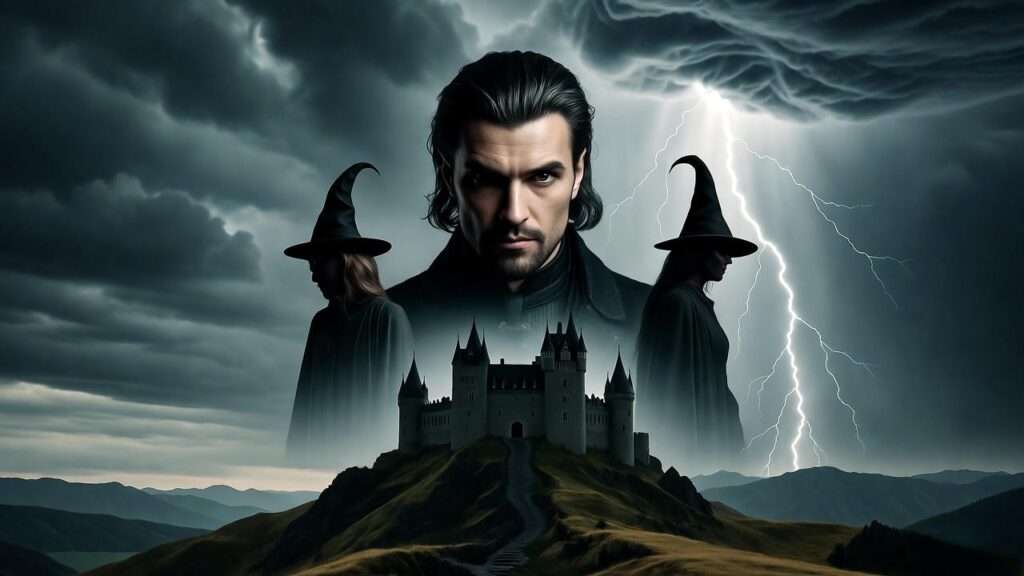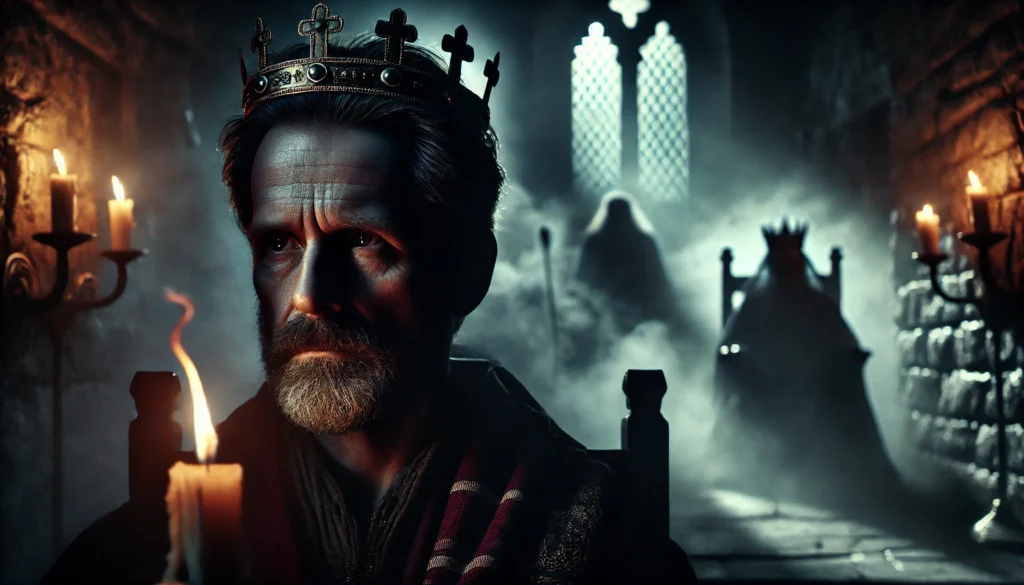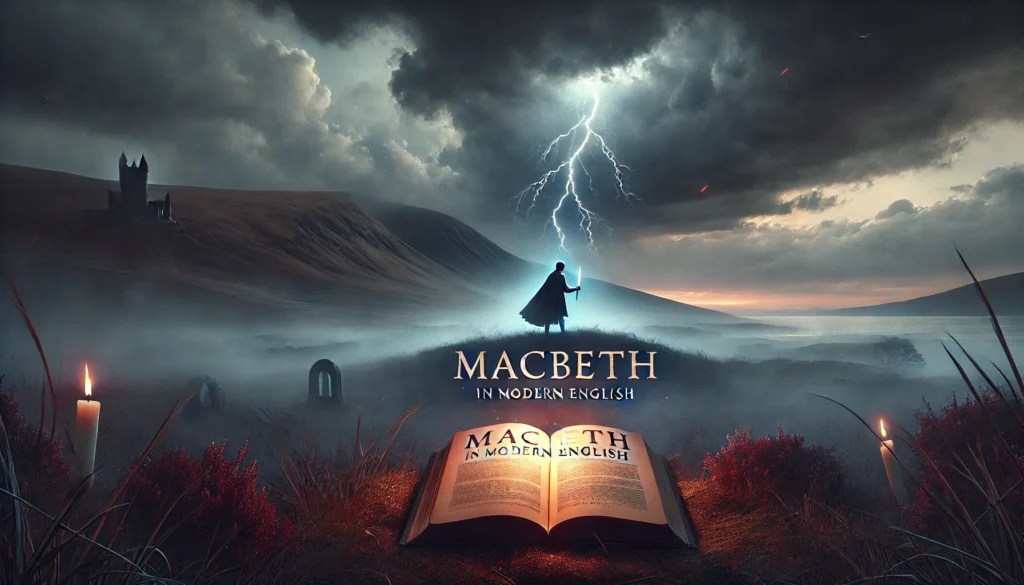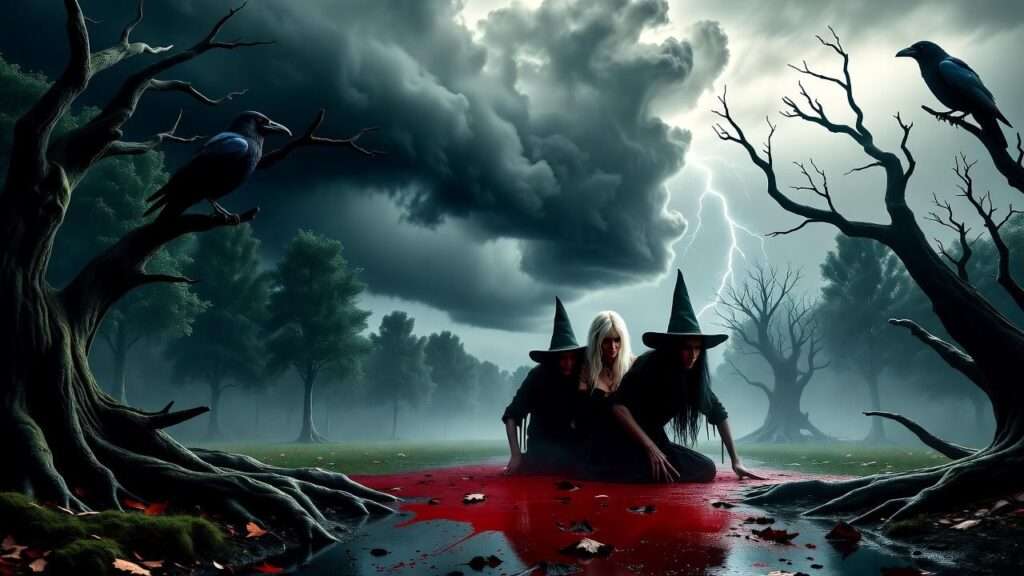What drives a noble warrior to betray his king, murder his friends, and descend into madness? William Shakespeare’s Macbeth grips readers with its chilling exploration of ambition, guilt, and moral decay. This one-pager on Macbeth book offers a comprehensive guide to understanding the play’s timeless themes, complex characters, and haunting language, making it accessible for students, educators, theater enthusiasts, and casual readers alike. Written by a Shakespeare scholar with over a decade of teaching and research experience, this article distills Macbeth’s brilliance into an engaging, insightful resource. Dive in to discover why this tragedy still resonates in our modern world.
Macbeth isn’t just a story of a Scottish thane’s rise and fall; it’s a mirror reflecting human nature’s darkest impulses. Whether you’re studying for an exam, teaching the play, or simply curious about Shakespeare’s genius, this guide provides clarity, depth, and practical insights to enrich your experience.
Why Macbeth Remains Relevant Today
A Universal Story of Ambition and Consequence
At its core, Macbeth is a cautionary tale about unchecked ambition. Macbeth’s hunger for power, spurred by the witches’ prophecy, leads him to commit heinous acts, only to face dire consequences. This theme resonates in today’s world, where ambition often drives leaders in politics, business, or even social media to cross ethical lines. Consider modern parallels: a CEO prioritizing profit over integrity or a politician sacrificing principles for power. Shakespeare’s portrayal of ambition as both a motivator and a destroyer speaks to anyone navigating personal or professional aspirations.
Macbeth’s relevance lies in its ability to transcend time. The play’s exploration of power dynamics and moral compromise mirrors contemporary struggles, making it a vital text for understanding human behavior.
Psychological Depth for Modern Audiences
Macbeth delves into the psyche with unparalleled depth, portraying guilt, paranoia, and mental unraveling in ways that feel strikingly modern. Macbeth’s hallucinations—seeing a dagger or Banquo’s ghost—reflect the toll of guilt, while Lady Macbeth’s sleepwalking scene reveals a mind crumbling under remorse. These moments align with today’s conversations about mental health, where stress and guilt can manifest in profound ways. Literary scholar Stephen Greenblatt notes that Macbeth “captures the psychological cost of ambition with a precision that feels almost clinical,” a sentiment echoed by psychologists studying moral injury.
This psychological realism makes Macbeth a compelling study for readers interested in the human condition, offering insights into how guilt and ambition can erode mental stability.
Expert Insight
Renowned Shakespeare scholar Stephen Greenblatt emphasizes that Macbeth’s enduring appeal lies in its “unflinching portrayal of human frailty.” His book, Will in the World, connects the play’s themes to universal experiences, reinforcing its relevance for modern readers.
Understanding the Core of Macbeth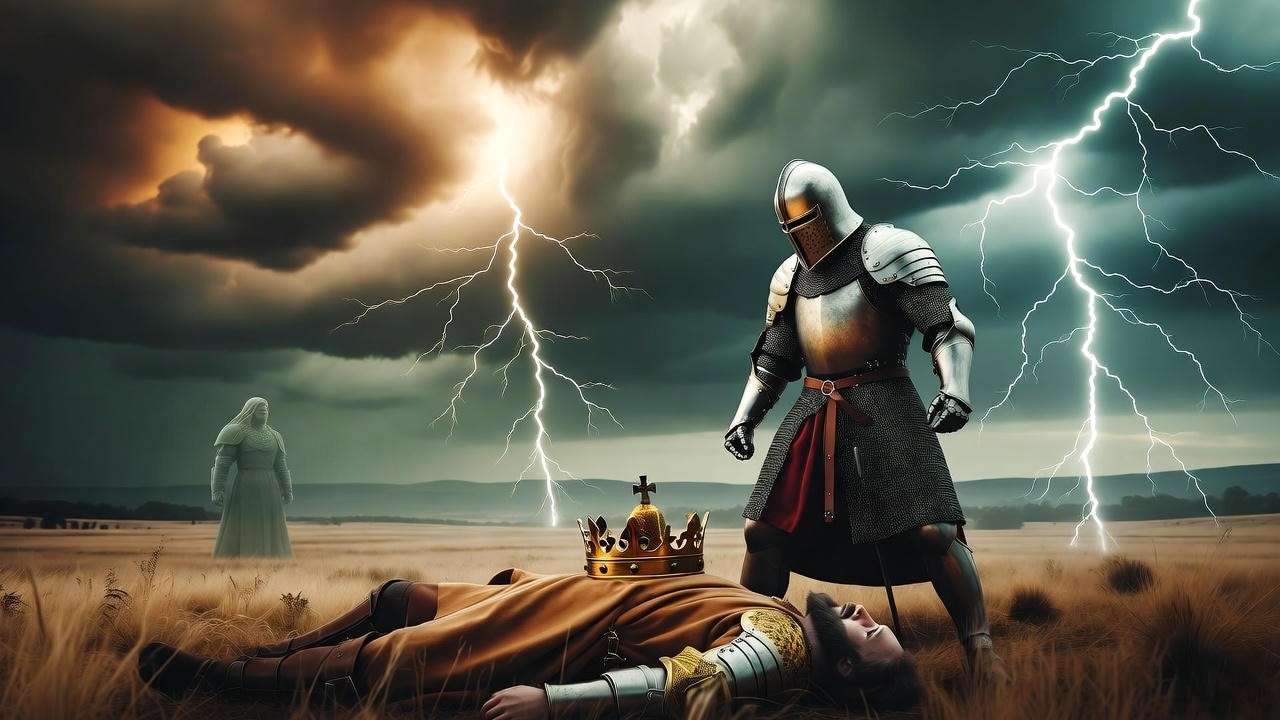
Plot Summary in a Nutshell
Macbeth follows the tragic arc of a Scottish nobleman whose ambition leads to his downfall. After three witches prophesy that he will become King of Scotland, Macbeth, egged on by his wife, Lady Macbeth, murders King Duncan to seize the throne. His ascent is marred by paranoia, leading to further murders, including his friend Banquo and Macduff’s family. Haunted by guilt and fear, Macbeth spirals into tyranny, only to be overthrown by Macduff, fulfilling the witches’ cryptic predictions. The play’s relentless pace and moral complexity make it a gripping read.
This summary avoids spoilers for first-time readers while highlighting key moments that drive the narrative, such as the witches’ prophecy and Macbeth’s moral decline.
Historical and Cultural Context
Written around 1606 for King James I, Macbeth reflects the Jacobean era’s anxieties. James I, a believer in the divine right of kings, was fascinated by witchcraft, a theme central to the play. The witches embody societal fears of the supernatural, while the murder of a king would have shocked audiences, given the era’s reverence for monarchy. The Gunpowder Plot of 1605, a failed attempt to assassinate James I, also looms large, with Macbeth’s themes of betrayal and regicide echoing these tensions.
Understanding this context enriches the play’s meaning, showing how Shakespeare wove contemporary issues into a timeless tragedy.
Tip: Visualizing the Plot
For visual learners, a timeline of Macbeth’s key events can clarify the play’s progression. Imagine a graphic charting Macbeth’s journey from loyal thane to doomed tyrant, with markers for the witches’ prophecy, Duncan’s murder, and the final battle. This visual aid (to be included in the final article) helps readers grasp the play’s structure at a glance.
Key Characters and Their Roles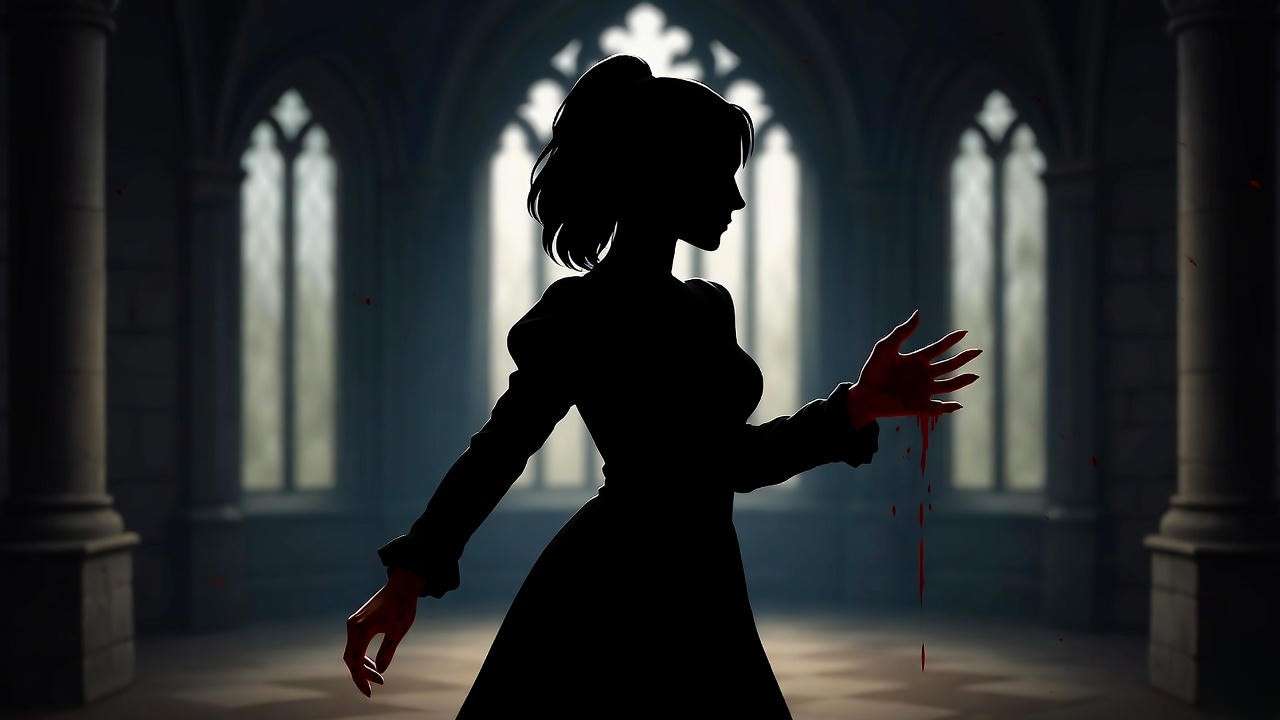
Macbeth: The Tragic Hero
Macbeth begins as a valiant warrior, loyal to King Duncan, but his encounter with the witches ignites his ambition. His tragic flaw—unrestrained ambition—drives him to murder Duncan, setting off a chain of violence. Shakespeare portrays Macbeth as a complex figure, torn between honor and desire. His soliloquies, like “If it were done when ’tis done,” reveal a man wrestling with his conscience, making him both relatable and tragic. Readers empathize with his internal struggle, even as they condemn his actions.
Macbeth’s arc illustrates the dangers of ambition unchecked by morality, a lesson as relevant today as it was in Shakespeare’s time.
Lady Macbeth: The Power Behind the Throne
Lady Macbeth is one of Shakespeare’s most compelling characters, a woman whose ambition rivals her husband’s. She manipulates Macbeth into murdering Duncan, challenging his masculinity and urging him to “screw [his] courage to the sticking-place.” Yet, her strength crumbles as guilt consumes her, culminating in her iconic sleepwalking scene. Feminist scholars like Elaine Showalter argue that Lady Macbeth’s ambition reflects the constraints of a patriarchal society, where women could only wield power indirectly.
Her complexity—both ruthless and vulnerable—makes her a fascinating figure for modern readers exploring gender and power.
Supporting Characters
- The Witches: The three “weird sisters” set the play in motion with their ambiguous prophecies. They symbolize fate, chaos, and the supernatural, leaving readers to question whether they control Macbeth or merely tempt him.
- Banquo: Macbeth’s loyal friend, whose murder marks a point of no return. Banquo’s ghost haunts Macbeth, embodying his guilt.
- Macduff: The noble thane who opposes Macbeth, representing justice and retribution. His family’s murder underscores Macbeth’s tyranny.
- King Duncan: The benevolent king whose murder disrupts the natural order, setting the tragedy in motion.
These characters enrich the play’s moral and thematic landscape, each contributing to its exploration of power and morality.
Expert Insight
Feminist critic Elaine Showalter notes in Representing Ophelia that Lady Macbeth’s ambition challenges gender norms, making her a “proto-feminist figure whose tragedy lies in her limited agency.” This perspective deepens our understanding of her role.
Major Themes and Symbolism
Ambition and Power
Ambition drives Macbeth’s plot, transforming a loyal thane into a tyrant. The witches’ prophecy plants the seed, but Macbeth’s choice to act on it leads to his downfall. Key scenes, like the dagger soliloquy (“Is this a dagger which I see before me?”), show his ambition wrestling with his conscience. This theme resonates with readers navigating their own ambitions, whether in career or personal life, highlighting the need for ethical boundaries.
Guilt and Conscience
Guilt permeates Macbeth, manifesting in vivid imagery. Macbeth’s vision of Banquo’s ghost and Lady Macbeth’s obsessive hand-washing (“Out, damned spot!”) illustrate how guilt erodes their sanity. These moments connect to universal experiences of remorse, making the play relatable to readers grappling with moral dilemmas.
Fate vs. Free Will
The witches’ prophecies raise questions about destiny and choice. Do they control Macbeth, or does he choose his path? This tension echoes philosophical debates about free will, engaging readers interested in existential questions. The witches’ equivocal language (“Macbeth shall never vanquish’d be, until / Great Birnam wood to high Dunsinane hill / Shall come against him”) underscores the ambiguity of fate.
Key Symbols
- Blood: Represents guilt and violence, recurring in lines like “Will all great Neptune’s ocean wash this blood / Clean from my hand?”
- Darkness: Symbolizes moral corruption and chaos, as in “Stars, hide your fires; / Let not light see my black and deep desires.”
- The Witches: Embody the supernatural and moral ambiguity, challenging the natural order.
Table: Themes and Key Scenes
| Theme | Key Scene Example | Significance |
|---|---|---|
| Ambition | Dagger soliloquy (Act 2, Scene 1) | Macbeth’s internal struggle with ambition |
| Guilt | Lady Macbeth’s sleepwalking (Act 5, Scene 1) | Guilt’s psychological toll |
| Fate vs. Free Will | Witches’ prophecy (Act 1, Scene 3) | Ambiguity of destiny and choice |
This table provides a quick reference for readers to connect themes with pivotal moments.
Shakespeare’s Language and Literary Techniques
Iconic Soliloquies and Quotes
Shakespeare’s Macbeth is renowned for its powerful language, particularly its soliloquies that reveal the characters’ inner turmoil. Macbeth’s “Is this a dagger which I see before me?” (Act 2, Scene 1) captures his hesitation before murdering Duncan, blending vivid imagery with psychological insight. Similarly, his “Tomorrow, and tomorrow, and tomorrow” (Act 5, Scene 5) speech reflects existential despair, resonating with readers grappling with life’s fleeting nature. Lady Macbeth’s “Out, damned spot!” (Act 5, Scene 1) is equally iconic, encapsulating her guilt-driven madness. These lines are not just memorable; they offer profound insights into human emotions, making them essential for understanding the play’s depth.
For readers, memorizing these quotes can unlock Macbeth’s emotional core, whether for academic study or personal appreciation.
Use of Imagery and Metaphor
Shakespeare’s use of imagery in Macbeth creates a haunting atmosphere. Blood imagery, as in “It will have blood, they say; blood will have blood” (Act 3, Scene 4), underscores the inescapable consequences of violence. Darkness pervades the play, with lines like “Come, thick night, / And pall thee in the dunnest smoke of hell” (Act 1, Scene 5), symbolizing moral and spiritual corruption. The motif of equivocation—language that deceives or misleads—appears in the witches’ prophecies, reflecting the play’s theme of ambiguity. These literary devices enrich the text, offering layers of meaning for close readers.
Dramatic Structure
Macbeth follows a five-act structure that builds tension toward its tragic climax. Act 1 establishes the witches’ prophecy and Macbeth’s ambition. Act 2, with Duncan’s murder, marks the point of no return. Act 3 shows Macbeth’s descent into tyranny, Act 4 escalates the stakes with Macduff’s family’s murder, and Act 5 delivers the inevitable downfall. This structure mirrors classical tragedy, with each act tightening the noose around Macbeth. For readers, understanding this structure reveals how Shakespeare crafts suspense and inevitability.
Expert Insight
Linguistic scholar David Crystal, in Shakespeare’s Words, highlights how Macbeth’s use of iambic pentameter enhances its rhythmic intensity, making soliloquies like the dagger speech feel both poetic and visceral. This technical mastery underscores Shakespeare’s skill, appealing to readers interested in literary craft.
Macbeth in Performance and Adaptation
Notable Stage and Film Adaptations
Macbeth has inspired countless adaptations, each reinterpreting its themes for new audiences. Orson Welles’ 1948 film sets a dark, expressionistic tone, emphasizing the play’s supernatural elements. Roman Polanski’s 1971 adaptation, made after personal tragedy, leans into the play’s violence and despair, offering a gritty interpretation. The 2015 film, starring Michael Fassbender and Marion Cotillard, uses stark visuals and a war-torn setting to highlight the psychological toll of ambition. These adaptations showcase Macbeth’s versatility, appealing to theatergoers and cinephiles alike.
Each version brings unique insights, making Macbeth a living text that evolves with its directors’ visions.
Modern Interpretations
Contemporary theater productions often reimagine Macbeth in modern contexts. For example, a 2021 Royal Shakespeare Company production set the play in a dystopian regime, drawing parallels to authoritarian politics. In pop culture, Macbeth influences works like House of Cards, where Frank Underwood’s ruthless ambition echoes Macbeth’s. These reinterpretations keep the play relevant, showing how its themes of power and betrayal resonate across eras. For readers, exploring these adaptations can deepen their appreciation of Macbeth’s universal appeal.
Tip: Viewing Guide for Macbeth Adaptations
To explore Macbeth on screen, start with the 2015 Justin Kurzel film for its cinematic intensity, or try the 2010 PBS version with Patrick Stewart for a stage-inspired take. Pair these with a reading of the play to compare how directors interpret key scenes, like the witches’ prophecy or Lady Macbeth’s sleepwalking.
How to Study or Teach Macbeth
Tips for Students
Studying Macbeth can feel daunting due to its dense language and complex themes, but practical strategies can help. First, break down soliloquies line by line, paraphrasing them to grasp their meaning. For example, in the dagger soliloquy, focus on Macbeth’s conflicting emotions. Track themes like ambition or guilt across the play, noting key quotes. Use resources like the Folger Shakespeare Library’s online texts, which offer annotations and glossaries. Watching a performance can also bring the text to life, helping you visualize characters and settings.
For exam preparation, create a theme-based study guide with quotes and scene references to streamline revision.
Strategies for Educators
Teaching Macbeth offers opportunities to engage diverse learners. Stage key scenes in class to help students connect with the dialogue’s emotional weight. For example, have students perform the witches’ opening scene to explore its eerie tone. Encourage debates on questions like “Is Macbeth a victim of fate or his own choices?” to spark critical thinking. Assign creative projects, such as writing a modern retelling of Macbeth set in a corporate boardroom or political campaign. These activities make the play accessible and relevant, especially for younger students.
Discussion Questions
- How does Lady Macbeth’s ambition challenge gender norms of her time?
- Are the witches responsible for Macbeth’s actions, or do they merely reveal his desires?
- How does Shakespeare use imagery to reflect Macbeth’s moral decline?
These questions encourage deep analysis and classroom engagement.
Expert Insight
Educational researcher Carol Jago, in With Rigor for All, advocates teaching Macbeth through performance-based activities, noting that “acting out scenes helps students internalize Shakespeare’s language.” This approach aligns with modern pedagogy, ensuring Macbeth resonates with diverse learners.
Common Misconceptions About Macbeth
Was Macbeth a Villain or a Victim?
A common misconception is that Macbeth is purely a villain. While his actions—murdering Duncan, Banquo, and Macduff’s family—are heinous, Shakespeare portrays him as a tragic figure undone by his flaws. The witches’ prophecy tempts him, and Lady Macbeth’s manipulation amplifies his ambition, suggesting external influences shape his choices. Yet, Macbeth’s agency in committing these acts makes him culpable. This complexity invites readers to see him as both villain and victim, a nuance often overlooked in simplified readings.
Misreading Lady Macbeth
Lady Macbeth is often stereotyped as a cold, manipulative figure, but this oversimplifies her character. Her early ruthlessness (“Unsex me here”) contrasts with her later vulnerability, as guilt drives her to madness. Feminist scholars argue she’s a product of a patriarchal society, forced to channel her ambition through her husband. Recognizing her complexity challenges readers to rethink gender dynamics in the play, moving beyond the “evil wife” trope.
Clarifying the Witches’ Role
Some believe the witches control Macbeth’s fate, but their prophecies are ambiguous, leaving room for free will. For example, they predict Macbeth will be king but don’t dictate his actions. This ambiguity fuels debates about destiny versus choice, a key lens for understanding the play.
FAQs About Macbeth
What is the main theme of Macbeth?
The central theme is ambition and its destructive consequences, intertwined with guilt, fate, and moral decay. These themes drive the narrative and resonate with modern audiences.
Why is Macbeth considered a tragedy?
Macbeth follows the tragic structure: a noble hero with a fatal flaw (ambition) falls due to his own choices, eliciting pity and fear from the audience.
How can I understand Shakespeare’s language in Macbeth?
Start by reading annotated editions (e.g., Folger or Arden Shakespeare). Watch performances to hear the dialogue’s rhythm, and paraphrase complex passages to grasp their meaning.
What are the best Macbeth adaptations to watch?
The 2015 film with Michael Fassbender offers a cinematic take, while the 2010 PBS version with Patrick Stewart is stage-focused. Both highlight different aspects of the play.
Macbeth remains one of Shakespeare’s most powerful works, a tragedy that probes the depths of ambition, guilt, and human frailty. This one-pager on Macbeth book has unpacked its plot, characters, themes, and language, offering a comprehensive guide for students, educators, and enthusiasts. By exploring its historical context, psychological depth, and modern relevance, we see why Macbeth continues to captivate. Whether you’re analyzing soliloquies, teaching the play, or watching an adaptation, this guide provides the tools to appreciate Shakespeare’s masterpiece. Dive deeper into Macbeth—its lessons are as vital today as they were in 1606.

